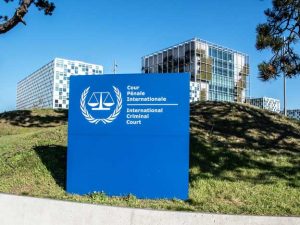
By Silvia Fernandez de Gurmendi
THE HAGUE, Netherlands, Jul 13 2023 – On the night of 17 July 1998, the outcome of the Diplomatic Conference convened to create the International Criminal Court was still uncertain. Hundreds of state representatives and civil society organizations assembled in the FAO headquarters in Rome, holding their breath in anticipation.
Finally, after midnight, euphoric delegations could applaud the outcome of the vote: 120 states in favour, 7 against and 21 abstentions. A long-standing dream was to become reality: the creation of a permanent criminal court to investigate and try perpetrators of genocide, war crimes and crimes against humanity.
The crime of aggression was also included, but only in a programmatic way pending agreement about its definition and the conditions under which the Court could exercise jurisdiction. These questions were only resolved 12 years later in the first review conference held in Kampala, Uganda in 2010.
In the 25 years that followed the adoption of the Statute, successive judges and prosecutors contributed to operationalizing this Court, simultaneously desired and feared by different actors of the international community. States and civil society expected much of this unparalleled institution and its potential to impact positively on conflict resolution.
The creation of an international court with jurisdiction over international crimes was not in and of itself something new. The International Criminal Court followed the steps of the post-war Nuremberg and Tokyo tribunals, as well as those created by the United Nations Security Council 50 years later for the former Yugoslavia and Rwanda.

Silvia Fernandez de Gurmendi
However, the establishment of the first permanent international criminal jurisdiction, represented a key paradigm shift. Contrary to special tribunals, the International Criminal Court was not created to exercise jurisdiction solely in predetermined situations but to decide for itself, fully independently, where to investigate and who to prosecute. The ability to select situations in the world where to intervene gave it powers never previously granted to any other court.
To counterbalance this ambitious mandate, the Court was conceived as a complementary institution of last resort, with the power to act only in those cases of inaction or lack of genuine action by national systems.
Furthermore, despite its global vocation, the International Criminal Court was not granted universal jurisdiction. Unless the United Nations Security Council requests the Court to act, the Court may only investigate and prosecute in situations in which the states in whose territories the crime are committed or the states of nationality of the perpetrators are parties to the Rome Statute.
In its 25 years of operations and within the parameters set by its constituent treaty, the Court has demonstrated its capacity to investigate and prosecute in multiple situations of extremely grave crimes in Africa, Asia, America and Europe. It has also demonstrated the possibility of involving the victims of those crimes in its proceedings and of repairing the harm suffered by hundreds of thousands of them, either directly and indirectly.
For the first time, the Rome Statute introduced elements of reparative justice which allow victims to participate in the proceedings to make observations and to request reparation. These elements were later incorporated by the legal frameworks of other international courts and today form an integral part of international criminal justice.
The Court has achieved significant accomplishments, but has also suffered difficulties in its functioning. Currently, the Assembly of States Parties is undertaking, together with the Court and civil society, a holistic review to strengthen of the Rome Statute system by accelerating proceedings and improving the performance, governance, and work culture of the Court.
This review also seeks to strengthen cooperation by states and to design suitable strategies to increase political support and protect the institution and everyone who collaborate with it against threats and attacks.
Today, the Rome Statute has 123 state parties. This is a significant number that comprises two thirds of states in the international community. However, it is still insufficient to achieve the Court’s global aspirations.
Broadening the universality of the Court is of crucial importance. Today the world needs more justice than ever. The atrocities of the twentieth century that led to the creation of the Court have not ceased and there is a growing erosion of multilateralism and the rule of law.
Despite current circumstances, there is cause for hope. The international community has redoubled its demand for justice and multiplied the initiatives to make it a reality. The establishment of the Court reaffirmed the obligation to investigate and prosecute and contributed to consolidate the concept that justice is an indispensable component of sustainable peace.
In addition to proceedings by the International Criminal Court and other international tribunals, more states are willing to exercise universal jurisdiction over international crimes. New mechanisms are being created to ensure the collection and preservation of evidence that may assist these international or national efforts.
We are seeing the emergence of a global justice system, or a justice “eco-system”, within which international and national courts have a role to play – sometimes a central role, sometimes a complementary or supporting one.
In July 1998, the Court was an idea yet to be realized. Twenty-five years after its creation, the hope is that more states will join this historical effort to maximize its potential to impart justice in our tumultuous world.
Silvia Fernandez de Gurmendi is President of the Assembly of States Parties to the Rome Statute; Former Judge and former President of the International Criminal Court.
IPS UN Bureau